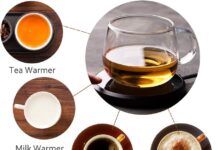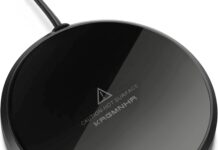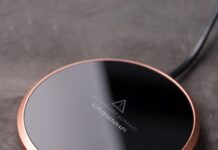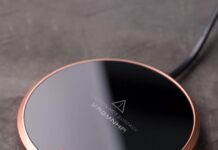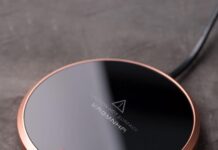Attention coffee lovers! Are you tired of over-extracting or under-extracting your precious morning brew? Look no further! We have the perfect solution for you – coffee thermometers for optimal brewing. These nifty little tools will revolutionize your coffee-making experience, ensuring that every cup is brewed to perfection. Say goodbye to bitter, burnt coffee or weak, watery brews. With a coffee thermometer in hand, you’ll have precise control over the temperature, resulting in a rich and flavorsome cup of Joe every single time. Get ready to elevate your coffee game to new heights with the help of these incredible coffee thermometers. When it comes to brewing coffee, achieving the perfect cup requires precision and consistency in temperature control. This is where a coffee thermometer becomes an essential tool in your brewing process. Not only does it help you monitor the temperature accurately, but it also ensures consistency in your brews. Additionally, using a thermometer helps you avoid over- or under-extraction, resulting in a balanced and flavorful cup of coffee. In this comprehensive article, we will explore the reasons why you should use a thermometer for brewing coffee, the different types of thermometers available, the features to consider when choosing one, the optimal temperature range for brewing, how to properly use a coffee thermometer, popular brands to consider, tips for choosing the right thermometer, cleaning and maintenance guidelines, and alternative temperature measurement tools. So, grab your favorite cup of coffee and let’s dive in!
Accuracy in Temperature Control
One of the main reasons to use a coffee thermometer is to ensure accuracy in temperature control. Brewing coffee requires specific temperature ranges to extract the desired flavors from the coffee grounds. By using a thermometer, you can closely monitor the temperature of the water during the brewing process and make adjustments if needed. This precision allows you to avoid brewing at too high or too low temperatures, which can result in an under-extracted or over-extracted brew, respectively. With a thermometer, you can achieve the optimal temperature for your specific brewing method and maximize the flavor potential of your coffee.
Consistency in Brews
Another advantage of using a coffee thermometer is the ability to achieve consistency in your brews. Different brewing methods require different temperature ranges for the best results. By consistently brewing at the same temperature, you can replicate your favorite cup of coffee and experiment with different variables, such as coffee grind size or brew time, while keeping the temperature constant. This consistency allows you to fine-tune your brewing process and develop your preferred brewing recipe. Whether you’re making pour-over, French press, or espresso, a coffee thermometer ensures that each cup is brewed consistently, resulting in a reliable and enjoyable coffee experience.
Avoiding Over- or Under-Extraction
Over- or under-extraction can greatly impact the taste of your coffee. When coffee grounds are under-extracted, the flavors and aromas are weak, resulting in a lackluster cup of coffee. On the other hand, over-extracted coffee can taste bitter and have an unpleasant aftertaste. Using a thermometer allows you to hit the sweet spot for extraction, extracting the optimal amount of flavor compounds from the coffee grounds while minimizing unwanted bitterness. This balance is crucial for achieving a well-rounded and delicious cup of coffee.
Types of Coffee Thermometers
Coffee thermometers come in different types, each with its own advantages and uses. Understanding the different types can help you choose the one that best suits your needs.
Digital Thermometers
Digital thermometers are equipped with a digital display that shows the temperature readings. They are known for their accuracy and fast response time, providing you with real-time temperature updates. Digital thermometers often have a probe that can be inserted into the coffee brew, allowing you to monitor the temperature without disrupting the brewing process. Some digital thermometers even come with additional features like programmable temperature alarms or timers, making them versatile tools for home brewing.
Stick-On Thermometers
Stick-on thermometers, also known as adhesive thermometers, are designed to be stuck onto the outside of your coffee brewing vessel. They come in the form of stickers or strips that contain temperature-sensitive materials. Stick-on thermometers provide a convenient way to monitor the temperature without the need for any additional equipment. They are especially useful for brewing methods like French press or pour-over, where the water is in direct contact with the brewing vessel.
Clip-On Thermometers
Clip-on thermometers are designed to be attached to the side of a brewing kettle or pot. They typically feature a clip or clamp that securely holds the thermometer in place. Clip-on thermometers are commonly used in larger-scale brewing or commercial settings, where precise temperature control is essential. They allow you to monitor the temperature of the water as it heats up, ensuring that it reaches the desired brewing temperature before starting the brewing process.
Features to Consider in Coffee Thermometers
When choosing a coffee thermometer, it’s important to consider several features that can greatly impact your brewing experience. Here are some key features to look for:
Temperature Range
The temperature range of a thermometer determines its suitability for different brewing methods. Some thermometers have a wide temperature range, making them versatile for various brewing techniques, while others are specifically designed for a specific temperature range, like brewing espresso. Consider your preferred brewing methods and choose a thermometer that can accurately measure temperatures within your desired range.
Response Time
The response time of a thermometer refers to how quickly it registers a change in temperature. A fast response time is crucial for accurately monitoring the temperature during the brewing process, as it allows you to make timely adjustments if needed. Look for thermometers with a quick response time to ensure precise temperature control.
Accuracy
Accuracy is a crucial factor when it comes to temperature control in coffee brewing. A thermometer should provide accurate temperature readings within a small margin of error. Look for thermometers that are known for their accuracy or have been calibrated by reputable manufacturers to ensure reliable temperature measurements.
Ease of Use
Using a coffee thermometer should be a hassle-free experience. Look for thermometers that are easy to use and read. Consider the readability of the thermometer’s display, the simplicity of its design, and any additional features that enhance usability, such as backlit displays or intuitive controls.
Durability
A durable thermometer is essential for frequent use in the kitchen. Look for thermometers made from high-quality materials that can withstand the demands of brewing coffee. Stainless steel or food-grade plastic thermometers are popular choices due to their durability and resistance to corrosion.
Water Resistance
Since brewing coffee involves water, it’s important to choose a coffee thermometer that is water-resistant or waterproof. This ensures the longevity of the thermometer and eliminates the risk of damage from accidental exposure to water. Look for thermometers that are explicitly labeled as water-resistant or waterproof to ensure their suitability for coffee brewing.
Optimal Temperature Range for Brewing
Understanding the optimal temperature range for brewing coffee is crucial for achieving the best results. The ideal brewing temperature depends on several factors, including the brewing method and the type of coffee being brewed. Here are some general guidelines for the optimal brewing temperature:
Ideal Brewing Temperature
The ideal brewing temperature for most coffee brewing methods falls between 195°F and 205°F (90°C and 96°C). This temperature range allows for optimal extraction of the coffee’s flavor compounds, yielding a balanced and flavorful cup of coffee. However, certain brewing methods like cold brew or Turkish coffee may require different temperature ranges to achieve the desired results.
Temperature Variations for Different Brewing Methods
Different brewing methods have varying temperature requirements to bring out the best flavors from the coffee grounds. Here are some temperature variations for popular brewing methods:
-
Pour-Over: The recommended temperature range for pour-over brewing is between 195°F and 205°F (90°C and 96°C). This range allows for proper extraction while minimizing the risk of over-extraction.
-
French Press: French press brewing typically requires slightly higher temperatures, ranging from 200°F to 205°F (93°C to 96°C). The higher temperature compensates for the longer steeping time and ensures a full-bodied and robust brew.
-
Espresso: Espresso brewing demands precise temperature control. The optimal brewing temperature for espresso falls within the range of 195°F to 205°F (90°C to 96°C). Consistently maintaining this temperature range is crucial for achieving the perfect balance of flavors in espresso.
These temperature ranges serve as general guidelines, and adjustments can be made based on personal preference and experimentation. Using a coffee thermometer allows you to fine-tune the temperature according to your taste preferences and brewing method.
How to Use a Coffee Thermometer
Using a coffee thermometer is a straightforward process, but there are some essential steps to follow to ensure accurate temperature readings and optimal brewing results. Here is a step-by-step guide on how to use a coffee thermometer effectively:
Selecting the Right Thermometer
First and foremost, choose a coffee thermometer that suits your brewing needs. Consider the type of thermometer, the features it offers, and its suitability for your specific brewing methods. Take into account the temperature range, response time, accuracy, ease of use, durability, and water resistance.
Calibrating the Thermometer
Before using a new coffee thermometer, it’s essential to calibrate it to ensure accurate temperature readings. Calibration involves comparing the thermometer’s readings to a known, accurate reference point. Follow the manufacturer’s instructions for calibrating your specific thermometer. This step ensures that your thermometer provides precise measurements and maintains accuracy throughout its lifespan.
Inserting the Thermometer
Once your thermometer is calibrated, it’s time to insert it into the brewing water. For digital thermometers with a probe, insert the probe into the water, making sure it is submerged without touching the brewer’s walls or bottom. If you’re using a stick-on thermometer, adhere it to the outside of your brewing vessel in a location that allows you to monitor the temperature easily. For clip-on thermometers, attach the thermometer securely onto the side of your kettle or pot, ensuring that the probe is fully immersed in the water.
Reading the Temperature
After the thermometer is properly inserted into the brewing water, monitor the temperature readings. For digital thermometers, read the temperature displayed on the digital screen. Stick-on thermometers typically have color-coded indicators or temperature scale to easily read the temperature. Clip-on thermometers often have a large dial or gauge that shows the temperature. Ensure you read the temperature at eye level and from a comfortable distance to avoid misreading the thermometer.
Adjusting Brewing Variables
As you monitor the temperature using the thermometer, make any necessary adjustments to your brewing variables to ensure the water stays within the optimal temperature range. If the temperature is too low, you may need to increase the heat or brewing time. If the temperature is too high, you can lower the heat or adjust the brewing time accordingly. Continuously monitor the temperature throughout the brewing process to maintain optimal extraction.
Popular Coffee Thermometer Brands
Several reputable brands offer coffee thermometers that are trusted by both home brewers and professionals. Here are some popular coffee thermometer brands worth considering:
ThermoPro
ThermoPro is known for its wide range of digital thermometers that are designed for various applications, including coffee brewing. Their thermometers are known for their accuracy, durability, and ease of use. ThermoPro offers features like programmable temperature alarms and timers, making their thermometers versatile tools for precision brewing.
Habor
Habor specializes in kitchen thermometers, including those specifically designed for coffee brewing. Their thermometers are known for their affordability and reliability. Habor offers a range of digital thermometers with fast response times and accurate temperature readings.
Taylor Precision Products
Taylor Precision Products is a well-established brand in the thermometer industry. They offer a variety of food thermometers, including options suitable for coffee brewing. Taylor thermometers are known for their accuracy and durability, making them trusted tools for precise temperature control.
Anpro
Anpro offers a range of digital thermometers designed for various kitchen applications, including coffee brewing. Their thermometers are highly rated for their accuracy, ease of use, and durability. Anpro thermometers often come with user-friendly features like backlit displays and intuitive controls.
CDN
CDN is a reliable brand known for its wide range of kitchen thermometers. Their digital thermometers are popular among coffee enthusiasts for their accuracy and fast response times. CDN offers thermometers with various features, allowing you to choose the one that best suits your brewing needs.
Consider these popular brands when looking for a coffee thermometer, keeping in mind your specific requirements and budget.
Tips for Choosing the Right Coffee Thermometer
Choosing the right coffee thermometer can greatly enhance your brewing experience. Here are some tips to help you select the perfect thermometer for your needs:
Consider Your Brewing Method
Different brewing methods have specific temperature requirements. Consider the brewing methods you commonly use or plan to explore and choose a thermometer that can accurately measure temperatures within those ranges. Ensure the thermometer is compatible with the brewing vessels you typically use.
Look for Temperature Range
Ensure the thermometer’s temperature range covers the optimal brewing temperatures for your preferred brewing methods. A wider temperature range gives you flexibility to experiment with different brewing techniques or expand your brewing repertoire in the future.
Check for Accuracy and Responsiveness
Accuracy and responsiveness are crucial factors in temperature control. Look for thermometers with high accuracy ratings and fast response times. Note any calibration features or certifications that indicate the manufacturer’s commitment to accuracy.
Evaluate Durability and Water Resistance
Consider the durability of the thermometer, especially if you plan to use it frequently. Stainless steel or food-grade plastic thermometers tend to be more durable. Additionally, look for thermometers that are explicitly labeled as water-resistant or waterproof to ensure their suitability for coffee brewing.
Read Customer Reviews
Customer reviews provide valuable insights into the performance and reliability of coffee thermometers. Consider reading reviews from trusted sources or online retailers to get a sense of other users’ experiences. Pay attention to recurring positive or negative comments about specific models or brands.
By considering these tips, you can narrow down your options and choose a coffee thermometer that meets your specific needs.
Cleaning and Maintenance of Coffee Thermometers
Proper care and maintenance of your coffee thermometer are essential to ensure accurate temperature readings and longevity. Here are some guidelines for cleaning and maintaining your thermometer:
Proper Cleaning Techniques
After each use, clean the thermometer thoroughly to remove any coffee residue or oils. Most thermometers can be wiped clean with a damp cloth or rinsed under running water. Avoid using harsh chemicals or abrasive cleaners, as they can damage the thermometer. If necessary, use a mild dish soap and water solution to gently clean the thermometer. Ensure the thermometer is completely dry before storing it.
Avoiding Submerging Digital Thermometers
Most digital thermometers are designed to be splash-proof but not fully submersible. Avoid completely submerging digital thermometers in water, as it can damage the internal electronics. When cleaning or rinsing a digital thermometer, be mindful of keeping the probe and display area dry. If the thermometer is accidentally submerged, remove the batteries and let it dry completely before reusing.
Storing the Thermometer Correctly
Proper storage helps prolong the lifespan of your coffee thermometer. Ensure the thermometer is completely dry before storing it to prevent the growth of mold or bacteria. Store the thermometer in a clean and dry area, away from direct sunlight and extreme temperatures. Consider using the original packaging or a protective case if provided to protect the thermometer from any potential damage.
By following these cleaning and maintenance guidelines, you can ensure that your coffee thermometer remains in excellent working condition and provides accurate temperature measurements for years to come.
Alternative Temperature Measurement Tools
While coffee thermometers are highly recommended for optimal brewing, there are alternative temperature measurement tools that can be used in certain situations. Here are some alternatives to consider:
Infrared Thermometers
Infrared thermometers use infrared technology to measure surface temperatures without direct contact. They are commonly used in industrial settings but can also be used in the kitchen. Infrared thermometers are useful for quickly measuring the temperature of coffee brewing equipment like coffee grinders or brewing kettles. However, they are not as accurate as thermometers with probes, especially when measuring the temperature of liquids.
Dial Thermometers
Dial thermometers, also known as bimetallic thermometers, use a coil spring to measure temperature changes. They consist of a dial with a needle that indicates the temperature on a scale. Dial thermometers are commonly used for meat or candy thermometers but can also be used for general temperature measurement in brewing. They are more suitable for monitoring the temperature of brewing water before it is poured into the coffee grounds.
Thermocouple Probes
Thermocouple probes are precision temperature measurement tools commonly used in industrial and scientific applications. They consist of two wires made from different metal alloys, which generate a voltage proportional to the temperature difference between the two ends of the wires. Although thermocouple probes can provide highly accurate temperature readings, they are not typically used in home brewing due to their cost and complexity.
While these alternative temperature measurement tools may have their uses in specific situations, coffee thermometers remain the most practical and reliable option for monitoring and controlling the temperature during the coffee brewing process.
Conclusion
In summary, using a coffee thermometer is highly beneficial for achieving optimal brewing results. Whether you’re a casual coffee lover or a dedicated home brewer, a thermometer helps you achieve accuracy in temperature control, consistency in your brews, and it allows you to avoid over- or under-extraction. When choosing a coffee thermometer, consider the type, temperature range, response time, accuracy, ease of use, durability, and water resistance of the thermometer. The optimal brewing temperature varies depending on the brewing method, with the general range falling between 195°F and 205°F (90°C and 96°C). Using a coffee thermometer involves selecting the right thermometer, calibrating it properly, inserting it into the brewing water, reading the temperature, and adjusting brewing variables as needed. Popular coffee thermometer brands include ThermoPro, Habor, Taylor Precision Products, Anpro, and CDN. When choosing a thermometer, consider your brewing method, temperature range, accuracy, responsiveness, durability, water resistance, and read customer reviews. Proper cleaning and maintenance of the thermometer are essential to ensure accurate readings and longevity. Alternative temperature measurement tools like infrared thermometers, dial thermometers, and thermocouple probes can be used in specific situations. However, coffee thermometers remain the most practical and reliable option for achieving optimal brewing temperatures. With a reliable coffee thermometer in hand, you can unlock the full potential of your coffee beans and enjoy consistently delicious cups of coffee each time you brew. Cheers to your perfect cup of coffee!




